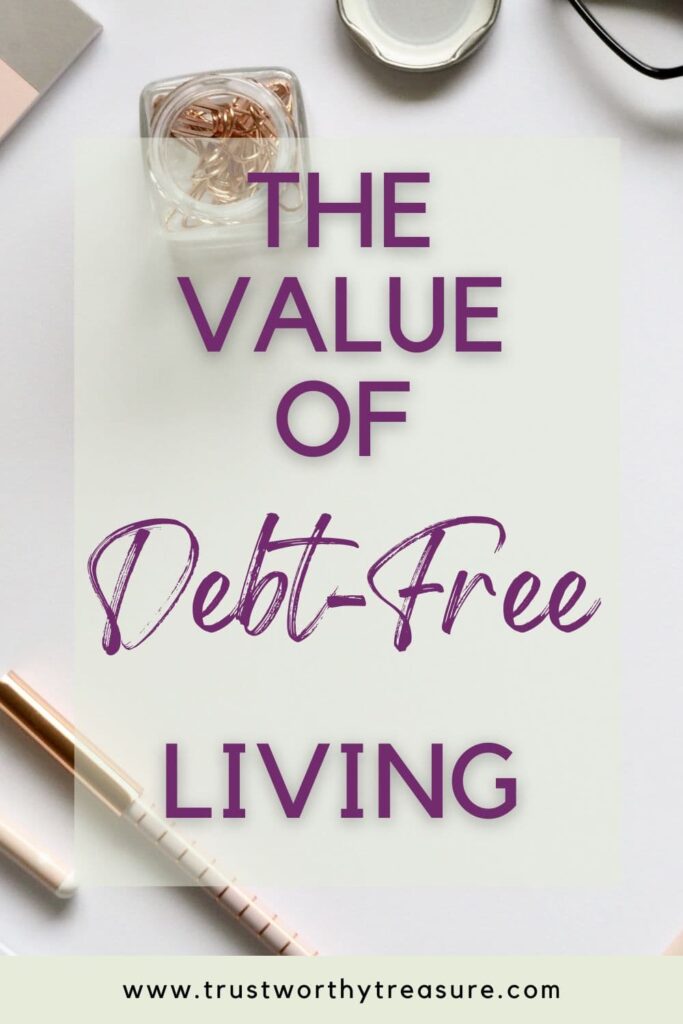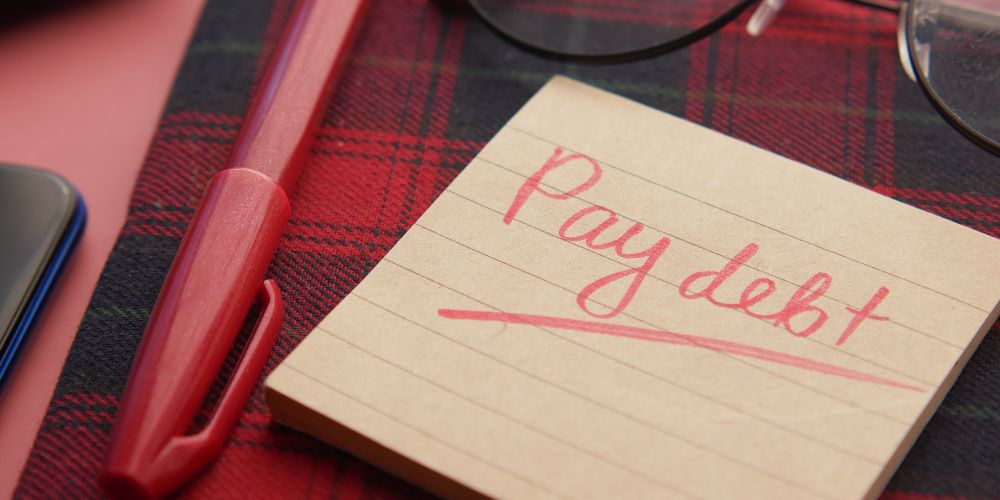As of the end of 2022, the average American held $101,915 in debt. While your situation is likely to be different from this figure, it still gives perspective to how much debt we are willing to take on.
Value of Debt-Free Living
“Free” is right in the name
Debt is a part of most of our lives. I know how much it can subconsciously feel heavy.
Pursuing debt-free living not only sounds, well, freeing but also gives the power of your money back to you.
No matter how much debt you have, you are paying interest (with exceptions in some situations). This is money charged to you for borrowing money. It has no benefit to you.
Opportunity to have more say over your money
When your paycheck is going toward expenses, but also payments that include interest, it can be demoralizing.
Decreasing or getting rid of debt gives you more power over your money because it’s all yours! All the dollars going toward interest every month can go toward your financial goals once you no longer have debt.
Opportunity for your Money to have more power
Because you have more control over your money when you pay down debt, your money has more power to do good.
Not only does it go toward your financial dreams and goals, but it gives you more bandwidth to give charitably.
There are a lot of benefits to charitable giving, but at the end of the day, it has to come from a place of personal desire.

How debt is working against you
Interest is a Financial Freedom killer
Do you know how much money you have paid in interest on all of your debts in the past year?
This can be a sobering number to know. While it is not necessary to create a budget, knowing how much money you are paying in interest every year is some solid motivation to start seriously paying off debt.
Websites like Calculator.net have a variety of calculators to help you figure out interest and payoff timelines.
Even if you don’t have all the exact information, it’s helpful to know the ballpark figure.
Knowing how much you are paying in interest gives perspective. While it may make you cringe, it is motivating.
How Much Interest We Paid
The only debt we currently have is a mortgage. Last year, we paid close to $4,000 in interest. Most everyone needs to get a mortgage, but it is still motivating to look at how much we paid in interest alone.
We have a very good interest rate and got a mortgage that was about a third of our pre-approval amount. This still feels like throwing money away, even if it was necessary to buy a house.
Perspective of Each type of debt you may have
Auto loans
A common attitude toward cars is “I don’t want a lemon”, so you purchase a new car, even if at a terrible interest rate on an auto loan.
While there is nothing wrong with new cars, it’s a purchase that can quickly add to your debt if you’re not intentional.
Cars are notorious for losing value almost immediately, so they are not a good “investment”. It’s worth it to drive more of a beater car for a season while you save for the financial goals that are important to you.
Student loans
You’re 18-25ish when you start taking out debt and it is hard to understand the implications of interest.
Decisions for college often are on “dream school” rather than what is affordable.
This has saddled a couple of generations of young people with a lot of debt – in many cases before being able to legally buy alcohol.
Student loans can have a good purpose – pursuing a useful degree, etc. However, it’s starting with so much debt before having a full-time job.
Credit cards
Credit cards make it easy to buy things or pay bills you don’t have cash for.
Plus, it’s very easy to get approval for a new card. This makes it easier to pay for things without having a budget.
Each time I applied for a credit card other than the secured card I started with, I was shocked at how quickly I was approved with really only my word as to what I earned.
Personal loans
These tend to have lower interest rates than credit cards. Like credit cards, these are usually used for bigger purchases that you don’t have the cash for.
Mortgages
If you want to buy a house, you most likely need to get a mortgage.
Almost 30% of Americans are “house poor”. This generally means spending over 30% of your income on housing costs of mortgage, HELOCs, taxes, etc.
It is easy to be approved for way more than what you can afford. I’d like to write more about this in the future, but your approval for a mortgage is largely based on credit score, Debt-to-income ratio, and income.
It DOES NOT take into account your other financial goals – that’s your responsibility!
I was shocked when we were approved for a mortgage that was almost 3x what our self-determined budget was!
You May experience shame with your debt
Shame can keep you in a cycle of debt. To experience debt-free living, you do need to address shame if you feel you have it. More about that here.
Mindset shift to debt-free living
Debt can feel like free money in the moment. It’s important to shift perspective from “I can afford this monthly payment” to “Save toward this big purchase”.
Debt-free living takes sacrifice and intentionality
Debt-free living takes sacrifice. This includes Intentionality and delayed gratification which are not the most fun feelings.
Creating a budget and a plan to pay off your debt will help you on the road to debt-free living as well as serve as your north star when paying off debt is not fun.



